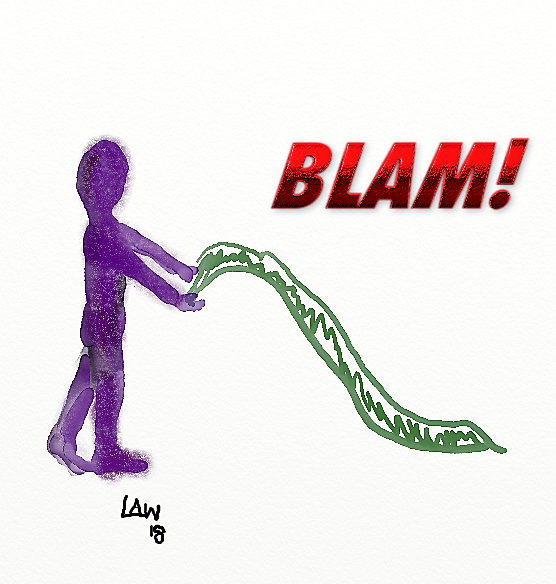Have you ever stopped to reflect on what makes a space sacred? Why a place of worship or a monument feels different from a supermarket? Some differences are physical and obvious, like the lighting or the architecture. But some places are sacred because we, as visitors, make them so.
Practicing yoga in a group setting can be valuable, renewing, and powerful because we have a shared space to learn, grow, and commit to our journey alongside others. Yoga studios provide sangha–community– they are the gardens where we come together to plant and nurture the seeds of our practice.
As we engage in our physical asana practice, we begin to see that we can carry the lessons from our mats into our daily lives. Why shouldn’t the place where we practice together embody the principles of yoga? I wish I could say that as a yoga student and teacher that I always see my fellow practitioners being mindful about the shared space where they practice, but unfortunately, this is not always the case.
It is up to us, to make our studio an extension of the objectives of yoga. The Yoga Sutras give us some guidance not just about our physical asana practice, but about how we should be interacting with the world around us. The first two limbs of the eight-limbed path that describe ethical practices and restraints, the yamas and niyamas, offer us some concrete suggestions. In particular, I’m going to offer some ideas on the practical applications of ahimsa (non-violence or non-harming), asteya (non-stealing), saucha (purity or cleanliness), and tapas (self-discipline, training of the senses).
1. Do no harm: ahimsa.
Sometimes when we move through the world without mindfulness, our way of moving can be harmful and disruptive to others. Ahimsa isn’t limited to not causing physical harm, but obviously that’s a good place to start. Unfortunately, we can also cause harm with our words, our actions, and lack of awareness too.
An example: You’ve arrived at the studio early to enjoy some quiet and relaxation time before class. You set yourself up in a corner so that you are out of the way of others. A group of other students come in to the practice area; they are clearly friends and chatting and laughing loud enough to distract you. A few minutes later another student arrives and throws their mat down with a clatter, startling you in your child’s pose. About five minutes into class, another student arrives late. You give them a baleful glare when you are forced to move your mat.

The remedy: Practice ahimsa. And this can start with just being aware of your body and breath in relation to those around you. Our universal goal should be to not negatively affect anyone else’s shared experience in the studio. Trying out some new fancy pranayama (breathing practice)? Make sure your breath is not disruptive to others around you or negating the practice that the teacher is leading (an extreme example would be engaging in breath of fire during a restorative yoga class). New perfume? Wait until after class to put it on. Heat and sweat intensify smells that are pleasant in other contexts. Finally, be respectful of those who are seeking to unwind in the studio before and after class. Try to keep chatter to a minimum and be aware of the volume of your voice and movements during transitions between classes.
2. Don’t steal the present moment from yourself or from others (asteya).
The most literal interpretation of asteya is that we not steal physical objects. Most of us are not thieves in the literal sense, but asteya can also relate to a subtler relationship with time and the present moment. If we are always rushing or always late, we can rob ourselves of the present moment.
An example: You swerve into the parking lot, grab your yoga mat, and sprint to the door of your yoga studio. In the meantime, class has already started. You interrupt the teacher to make your way into the practice room and you have to ask a few people to move to put down your mat. Even as you practice, you periodically check your phone.

The remedy: Don’t cheat yourself out of the present moment. Try to give yourself a buffer when you’re arriving to class. Give yourself time to unwind and be respectful of others who have arrived on time. Don’t steal peace from others by being loud or disruptive in the practice area, and don’t steal from yourself– be present.
3. A clean space makes an ordered mind (saucha).
Have you ever noticed how you may also feel more scattered when your home or room is chaotic? A clean and orderly studio space provides a place of fewer distractions for your mind and practice.
An example: You are in a hurry to leave class before it ends because you have another appointment to make. You slip out as the teacher is cueing for savasana. You don’t quite catch the door before it slams and, whoops, you left your block, a strap, and a pool of sweat behind you for someone else to clean up.

The remedy: Observe saucha. Clean up after yourself. Take that extra moment to put away your props neatly. Sweat a lot? Make sure that you have enough towels, so that you’re not sharing with those around you during practice. Maybe take it a step further and clean up after others if you have a little extra time.
All these scenarios connect back to the yama of tapas (self-discipline, training of the senses). Practicing yoga is a commitment: a commitment to our breath, a commitment to ourselves, and ultimately, a commitment to those around us with whom we share space, energy, and intention. The journey within ourselves starts with us as individuals, but we need our sacred community to sustain us along the way.
Finally, be gentle with yourself and others. Aim to be mindful, but realize that we all occasionally err. When we find someone’s behavior disruptive in our yoga studio, we can also consider it part of our yoga practice to react, communicate, and let go with grace and compassion. Together we can hold space for our sacred practice.
For additional reading:
Satchidananda, S. 2012. The Yoga Sūtras of Patañjali: Translation and Commentary by Sri Swami Satchidananda. Integral Yoga Publications: Buckingham, Virginia.
Gates, R. & Kenison, K. 2002. Meditations from the Mat: Daily Reflections on the Path of Yoga. Anchor Books: New York, New York.
This post contains affiliate links. These links provide commissions to support my blogging efforts with no additional cost to you.